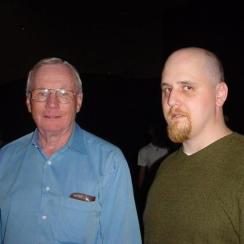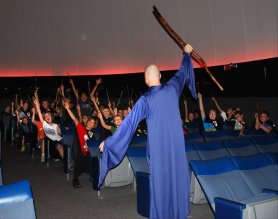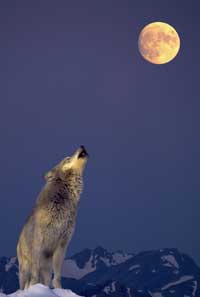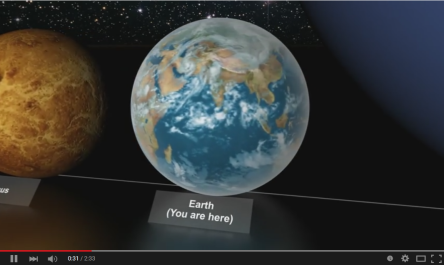
Jason Heaton, Assistant Director of Astronomy
What was your childhood dream job? Ballerina? Fire Fighter? Marine Biologist? Everyone is different, but it is certainly a rarity to be so inspired by something that you make it your life’s work. Jason Heaton, the Museum’s Assistant Director of Astronomy, visited the Boonshoft Museum as a little boy and fell in love with the possibilities that the night sky provided.
For this month’s Careers In Curiosity post, our guest blogger and Planetarium expert extraordinaire, Jason, will talk a little bit about running a Planetarium, teaching children and adults about our Solar System, and much more. Check out his blog below:

In 2003 I had the chance to meet Neil Armstrong
Hello, Nice To Meet You
My name is Jason Heaton and I am the Assistant Director of Astronomy at the Dayton Society of Natural History. The Astronomy department at the Boonshoft houses an observatory, a planetarium, and astronomy related exhibits.
How I Started in Astronomy
My career in astronomy began at the Boonshoft when I was a child. My parents enrolled me in the Boonshoft summer programs for many years. I

The NASA sponsored Exoplanets exhibit, produced by the Boonshoft Astronomy Department
loved archaeology, paleontology, and the activities at SunWatch, but the planetarium was by far my favorite. An energetic and hilarious planetarium director named Art Goss inspired me and fueled my love for the night sky.
In school, science classes were my favorite. I went to college at the University of Dayton, enrolling in Aerospace Engineering. I began working in the planetarium as a part time job while I was in school. During that time, I fell in love with astronomical visualization…making

A planetarium audience rides an Ice Slide set on Jupiter’s moon, Europa.
the stars come to life in the planetarium. I graduated U.D. with a degree in Computer Animation. I have been working for the Museum ever since, for more than twenty years now.
The Best Part of Working in the Astronomy Department
We do many different things in our department. We build astronomy exhibits such as the Exoplanet exhibit which recently opened. We house the Apollo Observatory, a large telescope open for free to the public on clear Friday nights. We have many different types of events that happen in the planetarium, people have proposed marriage, live bands have played, and astronauts have lectured. We have created planetarium shows and astronomical visualizations that have been shown around the world. However, my favorite thing about working in the astronomy department is presenting the live shows about the night sky in the Dome.

Speaking of magic, the planetarium is also one of the main stages for Harry Potter Camp, where I play Professor Starbuck, the Hogwarts summer school astronomy teacher.
Someone once said that as people we all have one thing in common…we all look up at the stars at some point in our lives and wonder. The planetarium is a unique place. When I was a child, it was magical. People come to our planetarium to learn about the sky and experience that same feeling of wonder and magic.
As a presenter, I have witnessed the same feeling of magic in the eyes of children coming to the star shows. They will often come back after the show and ask a million questions, it becomes obvious that they will leave the museum loving the stars the same way I have.
Future Generations
You never know who is going to come into the planetarium and become a future astronaut or astronomer. The first person on Mars may be someone who is in school right now. The astronomers who find the first Earth-like planet; the mission specialist onboard a future space station; the scientists that will help us get back to the Moon; all of these people have one thing in common: someone, or something, inspired them and their love of the night sky, perhaps in a planetarium like ours.





